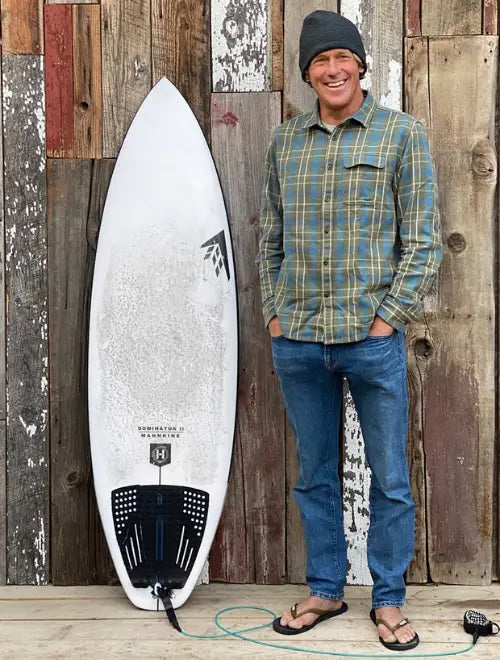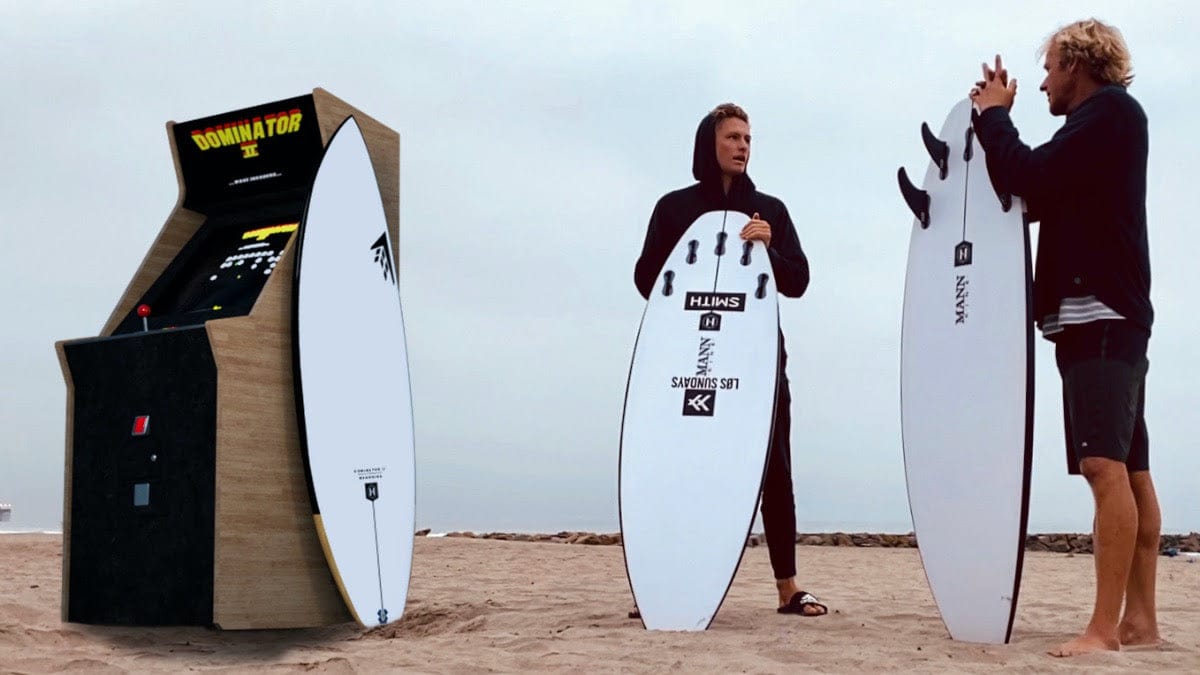The Dominator II with Dan Mann “The Wire” Podcast Summary
The Dominator II with Dan Mann “The Wire” Podcast Summary
Shaper Dan Mann recently sat down with The Wire podcast to talk about Firewire sandwich construction and his new Dominator II shape. Feel free to check out the podcast, or read on for a summary of the highlights from his conversation.
Kevin Schultz has been ripping on the Dominator II, which has been a pleasant surprise for shaper Dan Mann. Kevin tried one of Kelly Slater’s Dominator II's awhile back, and is now genuinely stoked on the board. He is especially excited about the sandwich construction, which is something Dan Mann first heard about in 2003, in the context of windsurfing boards. In 2006, when he went to Australia, a bunch of guys were doing sandwich construction boards there, and that was an eye-opener for him—especially once they were able to use balsa rails.
Sandwich construction is at the core of Firewire boards. It turns boards into something like a set of Legos, in that you can build the board how you want. Shapers have refined their designs to the nth degree, but now that you can open up materials with sandwich construction, you can tweak layers and weight and other things that might normally be difficult to account for. You can tweak flexibility, strength, the feel of the board, how it responds, etc.
The other benefit of sandwich construction is that you can make a really strong board really light. The construction process allows you to use less resin and also tweak the different layers of the board, so you can add harder layers on the outside, create flex in the middle, use resin as a bonding agent rather than a structural agent, etc. This provides a wide array of construction options that can be refined to create both strength and performance.
In short, sandwich construction lets Firewire use a super light weight, less dense, one-pound EPS blank without sacrificing strength. With normal PU boards, the blank provides some of the structural integrity, whereas sandwich construction allows you to building layers of strength with different skin layers, balsa rails, etc. The trick for Firewire’s shapers has been to learn to shape the materials that Firewire uses, and discover new possibilities that are created by this unique building process.
One of the advantages that Dan Mann sees in his Dominator II is the wide range of surfers and waves that it works for. Shapers are always trying to find a way to make high-performance boards work in junk waves, and to make grovelers still hold in good waves—and the Dominator II is the happy medium between the two. In terms of performance, the nuances of the vee out the tail and where the fins are located has been conducive to groveling in bad waves, but it’s still good in punchy waves.
The Dominator II is the sequel to the Dominator, which was released in 2008. The original Dominator was considered a groveler, and was one of the first quads Dan shaped and rode. He had been riding twinzers, which are like quads with small trailing fins—but as he discovered true quads, it was a bit of a revelation for him. Once he dialed in his fin placement, he wanted to shape a groveler—so he took his quad experimentation and pared it down into the board that became the Dominator. This was a year before Dan created the Potato, which also grew out of the quad experiments.
In Dan’s eyes, surfboards are elaborate vessels for fins. Boards provide the planing surface, but it’s the fins that you actually end up surfing. Boards direct water toward or away from fins. For instance, on a really wide tail you are pushing the limits of being able to push the board over onto rail, so you have to use fin placement and bottom contours to accomplish that. With the Dominator II, there is width through the front fins, but there’s a narrower tail outline due to a hip that gives way to a soft squash tail. The narrowness at the tail is where your foot drives from, so it’s not super difficult to put the board onto rail, whereas the width up front provides planing surface so that the board is able to get speed in smaller waves.
Meanwhile, the double-barrel concave is extended a little further forward and set within a single concave. This double barrel feeds the water through the leading front fin (as a quad) or through your center fin (as a thruster) as the board is put on rail. Then the vee out the tail helps with transition through the turn.

Dan Mann recently designed a new quad fin set that is available both with FCS and Futures. His goal was to create fins that you don’t feel—that integrate seamlessly into the board. You don’t want to feel a hum or a chirp, or feel that you are underfinned—you just want them to work for you, without having to think about them. The front fins in a quad should be the same no matter what, once you find a good template. Then you can tweak the rear fins to get a different feel with different boards and different waves—using wider quad trailer fins as waves get bigger, or replacing the quad trailers with a center fin to turn the board into a thruster.
More to Read...

